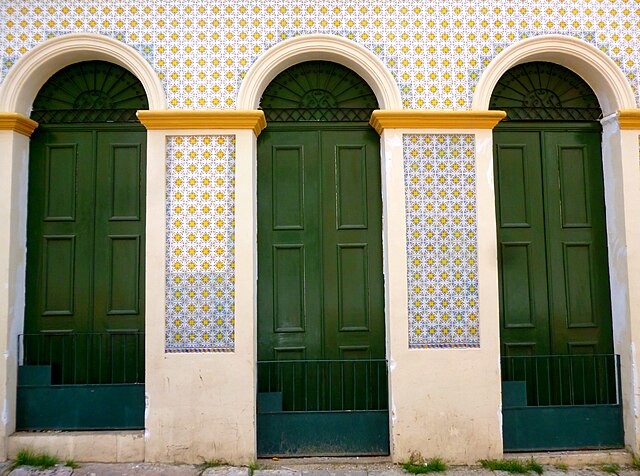Cidade Velha, initially called Mairi, Cidade or Sé neighborhood, is a historic area of the capital of Pará, Belém, founded in the 1620s. It is the first and oldest neighborhood in the city, originated from the Portuguese colonial settlement Feliz Lusitânia and the construction of the wooden fortress Forte do Presépio, at the mouth of the Piry creek, by Portuguese Captain-Mor Francisco Caldeira Castelo Branco, on January 12, 1616. He had the goal of occupying the Conquista do Pará in the then Captaincy of Maranhão, ensuring the dominance of the region and the drogas do sertão.
Portuguese-style houses and colorful tiles are the backdrop for one of Belém's most historic and important neighborhoods: the Cidade Velha
Coat of arms
At the beginning, Belém was an island that until the 1620s was separated from the mainland by the Piry Igarapé.
Onze Janelas Palace
Feliz Lusitânia, now known as Conjunto Arquitetônico e Paisagístico Feliz Lusitânia or Complexo Turístico Feliz Lusitânia, was a Portuguese colonial settlement created in 1616 by Captain Francisco Caldeira Castelo Branco in the then Conquista do Pará, at the time of the overseas province of Colonial Brazil, originating the Pará municipality of Belém. Feliz Lusitânia is the historical center of this municipality, located in the district of Cidade Velha, a port and tourist area restored in 2002 by the Government of the State of Pará, when the city was going through a process of historical urban decay due to verticalization.
Feliz Lusitânia
View of the Sacred Arts Museum and Santo Alexandre Church.
Onze Janelas Palacete






